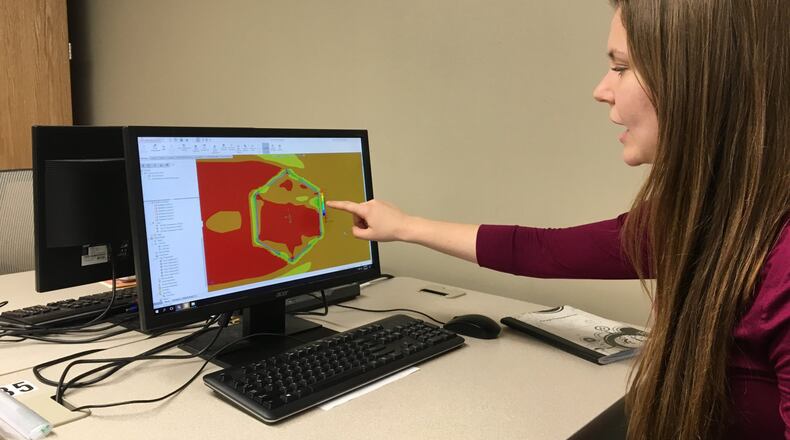Littlefield said she broke down crying when she saw an interview with a 12-year-old Syrian refugee.
“I stumbled upon an interview with a young Syrian boy and it just struck me that he was talking about wanting to be an engineer,” Littlefield said. “I realized that I was a little grumpy about going into the semester. To be put in his shoes and see that what I’m complaining about is this kid’s greatest dream…I just took it as motivation.”
Littlefield, an engineering student at Cedarville University from Hiram, Ohio, is designing a shelter to help refugees like the boy she read about. Although Littlefield and four of her peers started last fall on the project, it will likely be finished a little over a year from now by their younger classmates.
The students started the project as an entry in a competition at John Brown University but the concept will not be submitted until next year. If the project wins, it could be funded by the humanitarian organization Samaritan’s Purse to be manufactured and distributed to refugee camps, said Darren Holland, an associate professor overseeing the project.
The trick, Holland said, is designing something that costs $1,500 or less and can be built with few tools and resources while still being able to withstand the elements.
“The simplicity of this design is what makes it so complex. There’s so much you can design for and yet you’re limited in tools,” Holland said. “If you’re running away from a country you’re probably not going to stop and grab a hammer off your shelf.”
Students are testing how well their shelter would withstand 50-mile-per-hour winds, earthquakes and intense heat and freezing temperatures.
Wood cannot be used in the shelter design, so the five students are experimenting with types of metal that could be used as a frame.
Students are using machinery to build prototype parts and scaled down models. But, they want refugees to be able to make parts with what they have, so they will eventually see if parts can be made with simpler tools like a vice grip.
The students are drawing inspiration from refugee shelters that already exist, including one from Swedish furniture-giant IKEA. An issue with the IKEA shelter is that most of its parts are pre-fabricated so if they break, they’re hard to replace, Holland said.
“If something breaks you need a whole new shelter,” he said
Students are also trying to be mindful of Muslim traditions and values since the shelter would primarily be used in camps in the Middle East. They spoke to Holland’s aunt, who helped in refugee camps in Israel, to get a sense of cultural norms.
One cultural aspect students are trying to incorporate are private spaces in the shelter that could be used as prayer rooms. Figuring out how to divide up the shelter could be difficult though, Holland said, since the shelter will only be a few hundred square feet and can be no bigger than 20-feet by 20-feet.
Multiple shelters can also be built in a large circle to create something of a courtyard in between. A courtyard is an amenity that people in the Middle East value because they create a common space and a sense of community, students said.
“Making it culturally sensitive is a big part,” said Laura Schroll, an engineering student from New Jersey. “We don’t want to build something they don’t want.”
5 HIGHER ED MUST READS
About the Author
